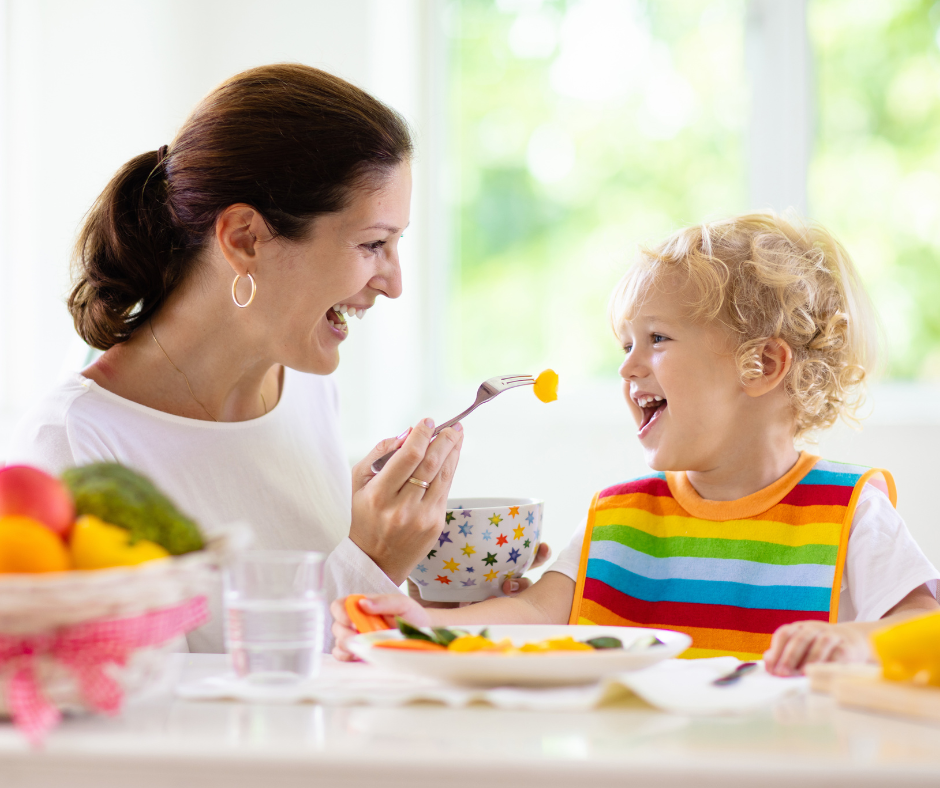Five tips for talking about food and eating
We want our kids to have a good relationship with food and eating.
Alison Ward, a Tasmanian Dietitian, shares her top tips to help make this happen.
- Keep it positive
Skip the “good” and “bad” food terms. When young children hear “good” or “bad” food, they may think that eating that food makes them a “good” or “bad” person.
What we eat does not reflect who we are as a person. - Build your child’s language
Describing the food your kids are eating is a great place to start. You can ask questions and even get playful! It can even happen when it’s not mealtime.
This helps build their language and number skills. We have included some examples below.
Build language and number skills
Ways to describe food
– This orange carrot makes a crunchy sound when I chew it.
– I love it when the sweet grape juice lands on my tongue.
– Look how the bread turns brown when I toast it.
Curious food questions
– What colour is the watermelon?
– Can you pick the furry fruit?
– Can you tell me what the strawberry tastes like?
Get playful
– Let’s count the number of apples we put in the bag.
– Play a sorting game with food, e.g. Can you sort all the red food together? What about the ones that are round?
– If we cut this pear in half, how many pieces do we have?
Out and about
– Let’s find a cucumber at the supermarket.
– Plant or visit a garden.
– Talk about foods and seasons when out, e.g. look how the apples grow on the tree.
- Grow, cook, and prepare food together
This is a great way to connect with your child. It also helps build language skills. Children may be more willing to try foods that they’ve helped make or grow. You can also look out for food-related activities at your local Child and Family Learning Centre. - Trust your child
Learning a skill takes time and support. Remember, all kids learn in their own way. Be confident your child knows their own appetite. Commenting on how much or what they eat can be unhelpful. Let them understand and trust their own body. - Leave the word “healthy” out of your chats
You may ask “But how will they know what’s healthy?” The best way for children to learn about food and eating is by watching those around them. You are your child’s most important role model.
We don’t need to use the word “healthy”. Research suggests that using the word “healthy” to describe a food can have the opposite effect. It can make kids less willing to try or eat the food.
If you want to know what a balanced food intake is for your child, talk to your health professional.
For more information visit https://doh.health.tas.gov.au/healthykids
